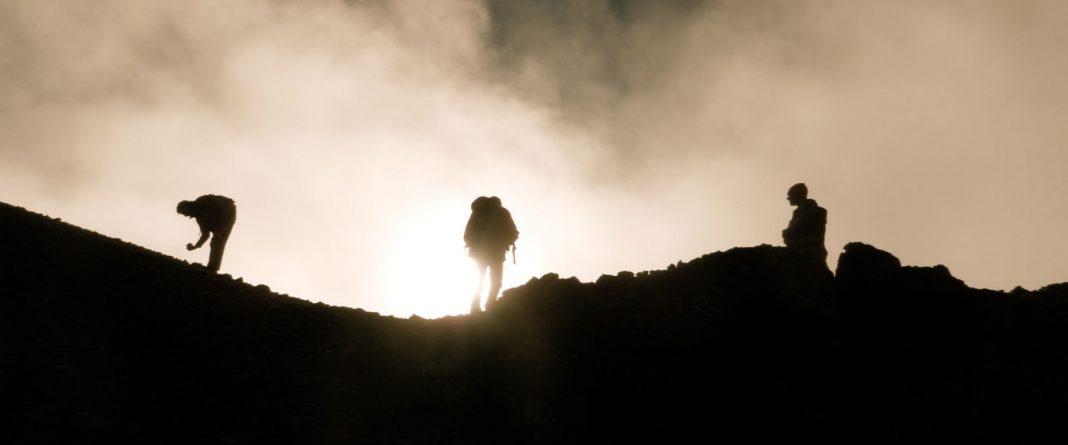Discovery Watch with Jim Goddard and John Kaiser
Jun 17, 2021
Jim Goddard: Welcome back, we’re speaking with John Kaiser. John, Eagle Plains is a prospect generator — a farmout favorite of yours that’s been featured on Discovery Watch for three different projects. Where do we stand with them today?
John Kaiser: Well, Jim, I introduced the Eagle Plains with the first project in early 2018. It was the Fisher project, which was a very extensive property south of the Seabee mine and Santoy mine that SSR (Mining) had acquired. SSR ended up doing a deal on the Fisher project to earn up to 80% percent and spend over 12 million dollars. What Eagle Plains did was once it had this deal in place, it spun out Taiga Gold to the shareholders on a one Taiga for two Eagle Plains shares basis. We are still covering the Fisher project and Taiga Gold as as a separate story in our Discovery Watch program. SSR finally vested for 80% when it gave a Taiga three million dollars. They’re now on an 80-20 joint venture and there’s a drill program starting on that project. Hopefully they end up getting some of those sexy intersections that make SSR say, “Okay, it’s time to take out Taiga Gold.” Meanwhile, Taiga Gold is busy drilling it’s own Orchid project, which is to the south of this area. They have about 10 holes that they drilled and they’re waiting for assays on that. Fisher is not part of Eagle Plains, although Eagle Plains still owns shares of Taiga Gold and would benefit if Taiga ends up being swallowed by SSR.
John Kaiser: The second project was the Iron Range project, which I introduced in mid-2018 the Iron Range is in southern British Columbia and this is an area that has potential for a Sullivan type of discovery. A decade ago, one of the companies that had auctioned it from Eagle Plains pulled a very interesting hole that sparked the market’s excitement. Even Eagle Plains, the underlying prospect generator or farm-out company ended up rising in price on the backs of this, but further drilling did not really pan out and show that this was a significant discovery. Eventually, the junior gave the property back to Eagle Plains. In the meantime, Eagle Plains had worked out a hypothesis as to where some very strategically placed holes could discover what this original discovery was really all about and this is what I like about Eagle Plains as a prospect generator farm-out company. In itself, a prospect generator is kind of a boring business because it always ends up with like 15-20 percent net at the end of the day, but every once in a while the company bucks the rule of always farming out the drilling to another party. In this case, they decided that we needed to drill those holes. And now the project has been farmed out to a private company that’s supposed to spend three million dollars over four years, but they’re only planning geophysical surveys this year and with 15% net or whatever to Eagle Plains, we don’t really care about that project anymore.
John Kaiser: Last year, they took another project the Vulcan project, which they had assembled over a fairly long period. Various groups had explored it before. It’s also in southern BC and it has evidence of Sullivan style mineralization zinc-lead-silver and the controversy with this project was where exactly was the Sullivan time horizon within this tilted stratigraphy. They weren’t sure and everybody was puzzled as to why they just couldn’t find Sullivan 2 within this land package. They had to do a geophysical survey, which ended up showing an MT anomaly that is close to surface and near the road. They figured it’s going to be cheap and easy to drill, so it’s potentially low hanging fruit. In April last year, we introduced the Vulcan project and they did drill this target. They killed two birds with one stone, unfortunately, the target turned out to be a gabbro intrusion which for some reason had graphite in it and that made it be a conductor in addition to being magnetic. That was not what they were looking for, but they did get the answer as to where the Sullivan time horizon is located within the stratigraphy and that’s of value to a future explorer who wants to put big bucks into this to find where a Sullivan 2 deposit might be hidden. They’ve farmed that out to a private company which plans to go public with it sometime in the future, however, there’s only geophysics planned for 2021 so we don’t care about that project anymore.
John Kaiser: They have now a fourth project which they call the Donna project. It’s also in southern British Columbia about 60 kilometers east of Vernon in an area called the Monashee Mountains. It’s an area where in 1871 placer gold was found in the upper reaches of the Kettle River and other creeks in that area, such as Cherry Creek. For the past hundred years, groups have tried to find the lode gold sources for the placer and they haven’t really had any success. They found these smaller zones and the general perception has been that there’s gold in them hills but it’s all smallish zones and in the modern world the size just isn’t there to make up for exploring. But the Donna property, which itself started receiving attention in 1974, has a group of four crown grant claims that were created way back in 1914 and it was mined on a very small scale from 1914 to 1961. They were called the Saint Paul and Morgan Mines. They only dragged 392 tons out of the workings, but they had really interesting grades at 14.4 gram per tonne gold average and 287 gram per ton silver, combined with lead and zinc values. Tim Termuende of Eagle Plains picked up this Donna project the surrounding project in 2016 from from a junior that was involved in Athabasca uranium exploration and wasn’t really interested in pursuing this gold potential. They farmed it out to another junior who rented it for a while but then gave it back last year. The company was very happy to get the Donna project back because the Saint Paul and Morgan claims had been stuck forever in some sort of estate limbo before Eagle Plains was finally able to get a deal to acquire those claims with that hole in the middle that has this high-grade mineralization that’s never been followed. Now, they own it! It’s part of the Donna project. Eagle Plains said we have to do some conceptual drilling underneath these old workings to find out what the geology is like. With this being located in the Quesnellia terrane, which hosts all these great British Columbia porphyry systems, we think that this is the same and we think that deeper down there may be some major systems in this Monashee area. Right now they’re using the term intrusion-related gold system. They think that these various showings that have been nicked here and there are are peripheral aspects of a major system. This program they’re doing is about five to seven holes for 1,500 meters total. That’s small, but they’re funding it with their own nickel and if they get lucky then they might intersect something very exciting. What they’re really looking for is geological context to put together a case that this entire region has potential for big systems at depth. That’s going to require big spending if they can come up with the geological evidence to justify doing so.
John Kaiser: This is a prospect generator or farm-out company but they have the option of also spinning out a project that they own one hundred percent. And do that in conjunction with a financing whose money is earmarked for that particular project on a hundred percent basis. They own a total of six projects or claim blocks within this Monashee district that are sort of scattered around. They could assemble together an entire district play. This is an example of a company of 150 million issued trading at 15-16-17 cents. They have 5.7 million dollars cash and about 4 million dollars worth of stocks in about 16 different companies, including the Taiga gold position. This is a solid little junior that motors along.
John Kaiser: With this Donna drill play, you’re essentially getting it for free because if this is a bust and they say there’s nothing really there then it doesn’t affect the stock price at all. But if they start to deliver some results that show this really has potential for a significant discovery, then you will get upside reward. That’s the beauty of prospect generator types that are willing to occasionally buck the rule and not farm something out. The generators who will do some work on their own projects are the leaders. To be frank, if you’re going to be a prospect generator farm out company these days then it’s not good enough just to do some surface work with geochemistry and fly some geophysics to say, “here’s some smudge at the surface and then some anomaly at depth — go to it and drill it.” Now, you have to look into the third dimension because the best prospects are not so obviously good at surface. You need to prospect with the drill. Get the geology, get the alteration envelope, get some evidence showing that we’re on the edge of something significant and then farm that out to the sort of juniors that want a promotable story. This whole business of taking a project where it’s just a so-called private property of merit that gets rented by these juniors to use it as a stepping stone and put no real money into it, then discard it as soon as they’ve latched on to something sexier to start promoting, that isn’t really helpful to a junior like Eagle Plains. Taking on this Monashee play to demonstrate that this is worth some serious exploration dollars because there’s stuff at depth that’s feeding this inconsequential stuff at surface. That’s the kind of strategy that prospect generator farm out companies should be involved in.
Jim Goddard: John, thank you so much for the update.
Original Source: https://secure.kaiserresearch.com/s4/KaiserBlog.asp?ReportID=906849
Discovery Watch is a weekly 15-30 minute audio show produced by HoweStreet.com where Jim Goddard interviews John Kaiser about resource juniors with projects that have caught John’s attention. The projects will not be limited to companies he has covered through the Spec Value Rating System. Jim and John will periodically circle back to review the projects and if necessary close them out as no longer worth watching. Check out the catalog of KRO Free Stuff. KRO offers a USD $450 Annual Individual Membership. This Discovery Watch session is available via YouTube or Podcast.









